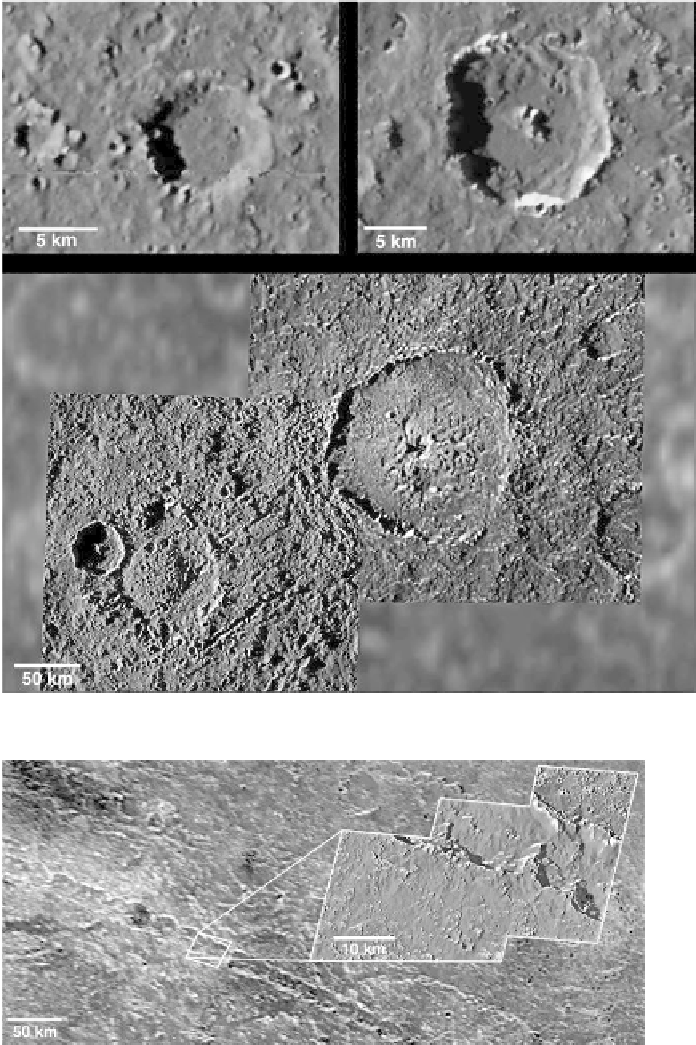Geology Reference
In-Depth Information
Figure 8.46. A composite of Galileo images
showing typical crater morphologies on
Callisto: upper left, a small
oored
crater (Galileo frame s0401505565); upper
right, a complex central-peak crater
(Galileo frame s0401505526); and bottom,
a central-pit crater (Tindr; right side) and a
central-dome crater (Har; left side) (NASA
Galileo frames s0401505300 and
s0413389500).
at-
Figure 8.47. Moderate-resolution (410m per
pixel) images of Gomul Catena, north of the
Valhalla multi-ring structure, and an inset of high-
resolution images (40m per pixel), showing the
degraded terrain on and around the catena
(NASA ASU IPF 1040).
searches for the primary craters were unsuccessful, lead-
ing to the consideration that they were formed by the
impacts from fragments of a larger object. The breakup
of comet Shoemaker-Levy 9 as it approached Jupiter
demonstrated that tidal disruption can result in a
“
string
”
of impacting objects, which could result in the formation
of some catenae. Similar chains of craters are seen on
Ganymede
(Fig. 8.33)
.
Schenk (
1995
) classified large impact features on
Callisto to include multi-ring structures, palimpsests, and
“
cryptic
”
ring structures. Multi-ring structures imaged by
Galileo include Valhalla
(Fig. 8.45)
, Adlinda, Asgard
(Fig. 8.48)
, Heimdall, and Utgard. Most are typi
ed by
central plains, a high-albedo zone extending beyond the
central area, and one or more sets of concentric scarps and
troughs.
Valhalla
'
is outer trough zone is about ~3,800 km across
and is characterized by sinuous depressions
(Fig. 8.49)
considered to be grabens resulting from extension of the
icy crust. Some troughs are probably related to older



